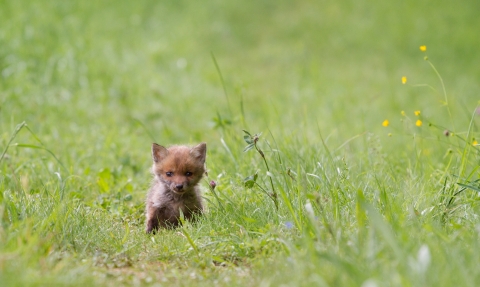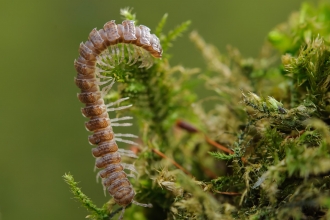
Explore the vast array of wild species to be found across the UK

Spiny squat lobster
A bizarre half lobster/half crab, this squat lobster is one of the true stunners of the rocky shore!

Green-leaf worm
This vibrant green worm is arguably the most attractive worm found on the rocky shore!

Solar powered sea slug
This remarkable creature shows nature’s fantastic complexity!
Garlic mustard
Favouring shady spots in woodlands and hedgerows, Garlic mustard can grow very tall. It has small, white flowers and, as its name…

Yellow meadow ant
The yellow meadow ant is known for creating anthills in grassland habitats. It has a close relationship with the chalkhill blue…

Red ant
Turn over large stones or paving slabs in the garden and you are likely to find a red ant colony. This medium-sized ant can deliver a…
Bloody-nosed beetle
The common name of the bloody-nosed beetle derives from its unusual defence mechanism: when threatened, it secretes a distasteful blood-…

Garden spider
Have you ever stopped to look at the shape of a spider web? Garden spiders spin a spiral shaped web, perfect for catching lots of juicy…

Common harvestman
The common harvestman is familiar to us as the large, spindly spider-like creature that frequents gardens and houses. It predates on…

Tree lungwort
Look out for this large, leafy lichen on trees in ancient woodlands in the west of the UK.

Flat-backed millipede
Found in compost heaps and under stones in gardens, the flat-backed millipede is a common minibeast. It is an important recycler of…
Fallow deer
Although introduced by humans, the fallow deer has been here so long that it is considered naturalised. Look out for groups of white-…
